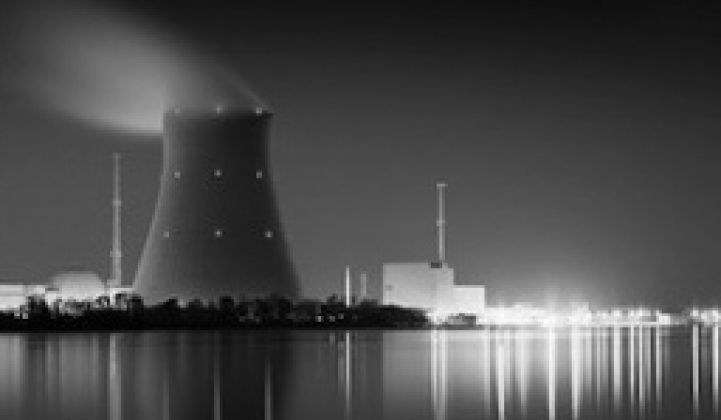For the first time in 34 years, the Nuclear Regulatory Commission has approved the construction of new nuclear plants.
Southern Co. and subsidiary Georgia Power have received approval to move forward with a pair of projects to be sited near Augusta, Georgia. Nuclear proponents are happy to see a new chapter opened for nuclear generation. At the same time, with the memory of the Fukushima disaster still fresh, the approval comes at a time when nuclear critics are particularly unhappy.
Both plants are to be built at an existing nuclear site, known as Vogtle, that already has two reactors. The new pair will produce up to 2,200 megawatts when and if they go online in 2016 to 2017. The plants are a new design from Westinghouse known as the AP1000.
The design is a modernization of the standard pressurized-water reactors that have been the norm in the U.S., and is claimed to come with passive safety features that automatically cool down the reactor following an accident, without need for human intervention. More importantly, Westinghouse says the AP1000 doesn't need electricity to cool everything down, a feature that was glaringly lacking at Fukushima.
The NRC voted 4-1 to approve the project. NRC Chairman Gregory Jaczko was the sole dissenter, which was irksome to some in the industry who felt that, despite the advances made in plant design, Jaczko could never be satisfied.
But Jaczko is far from the only person who is against the project. Groups like the Southern Alliance for Clean Energy and Greenpeace have railed against the approval, and a coalition of nine groups has already sued the NRC in the U.S. Court of Appeals for the D.C. Circuit. The groups have alleged that the NRC violated federal law by not considering the public safety and environmental implications of the Fukushima disaster before issuing these permits. Additionally, critics have condemned the plants on budgetary grounds.
The two plants are projected to cost about $14 billion. As it stands now, the utility is responsible for $6 billion, while loan guarantees would make up the rest. The cost of financing, estimated at $1.6 billion, is already being charged to consumers.
A law passed by Georgia's legislature in 2009 forces ratepayers to pay for plants before they're even producing power, which means ratepayers will be on the hook even if the plants never open. According to Georgia Power's estimates, residential customers are currently paying $44 a year in surcharges for the plants, and those fees will rise to $120 a year by 2018.
Also, according to journalist and environmental advocate Elliott Negin, the Vogtle plants pretty much fail on the long-held nuclear promise of cheap energy. Negin claims that the cost estimates for the reactors are higher than “than improved energy efficiency to cut electricity use, natural gas, biomass, land-based wind, and even coal.” Georgia also spends next to nothing on energy efficiency programs, and a 2009 Georgia Tech study cited by Negin concluded that the state could cut its electricity demand by 11 percent to 27 percent with more funding for aggressive energy-efficiency initiatives.
The Vogtle site already has a history of fiscal problems; the first pair of plants ran $8 billion over budget and took 16 years to build, which may mean the current four- to five-year construction timeline is optimistic.
So, is the new construction at Vogtle a nuclear renaissance, as it is being hailed? Having any new project approvals is a boon for an industry that's gone three decades without a single one. But, until the plants are actually built, on-time and on-budget, it's tough to argue that nuclear is back.
Large-scale pressurized-water reactors have gotten increasingly expensive in recent years, and that's a trend that is likely to continue. (Just a decade ago, cost estimates for plants like the Vogtle ones would have been about half what they are now.) Meanwhile, even the most expensive green energy tech is getting cheaper by the year.
That's not to mention the fact that, even with updates, uranium-fueled pressurized-water reactors are extremely complicated and not inherently failsafe. Alternatives exist; we've talked about the the thorium-fueled molten salt cycle before, which proponents claim has a number of fuel, proliferation, and safety benefits. Also, smaller modular reactors built assembly-line style offer potential cost, efficiency, and safety advantages because they don't require the complex site-based engineering of large-scale plants.
Of course, as is usually the case with nuclear, developing any plants at all is difficult enough, let alone alternative ones. So while the nuclear industry is touting its return, safety and fiscal concerns will be unlikely to abate any time soon.



